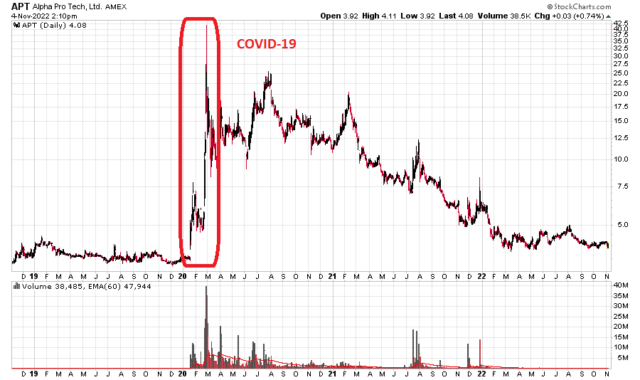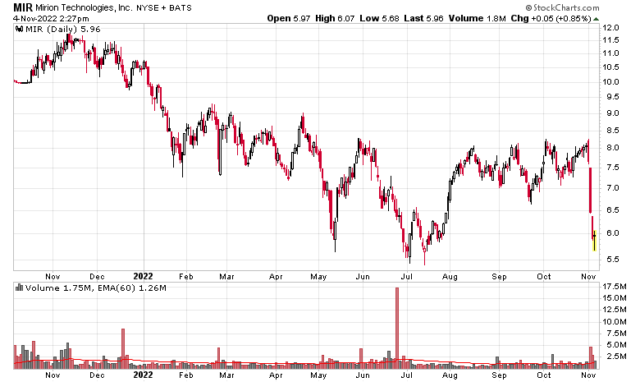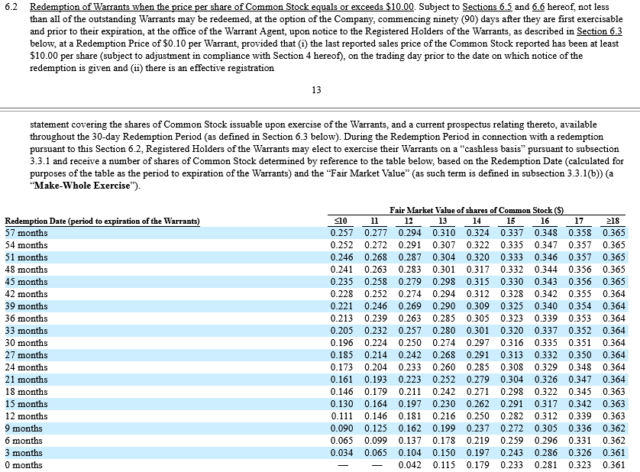Slate Office REIT (TSX: SOT.UN), as the name implies, is a REIT specializing in office properties. It is mostly Canadian, with properties in Saskatchewan and provinces eastwards, a couple buildings in Chicago and 23 properties in….. Ireland.
Clearly geographic concentration is not one of the focuses of this REIT.
In terms of their traded units, it has been fairly sleepy. If you take a 10-year chart and stick your fingers over the Covid portion, the units have meandered around $4-5 and have not really broken out of this range.
In terms of distributed capital, before Covid they got the distribution up to about 0.0625/month (75 cents a year). This was dropped after February 2019, to its current level of 40 cents a year. The characterization of distributions over the past couple years has been about half capital gains, half return of capital.
If you believe the MD&A, the so-called “Core FFO” is around 53 cents for the TTM.
IFRS book value is well above the current market price. Rounding to the nearest $100 million, on September 30, the stated property value is $1.8 billion and stated debt $1.1 billion.
The market value of the units is about $360 million.
This is about as mundane a REIT as it gets. The acquisition of the Ireland properties was really a departure from the previous inclinations.
A very well known businessman, George Armoyan (who runs TSX: CKI) owns, via his controlled corporation (G2S2), a sizeable stake in SOT, approximately 15-16%. They represent by far the largest unitholder group in Slate Office REIT, much more than Slate Asset Management (the effective controllers of SOT at this point in time) itself.
G2S2 created a website with an amusing name, Clean the Slate which you can check out (and which will likely be taken down after the proxy battle is over).
You can read their website to view their justifications on October 20 and 26. Putting a long story short, SOT has a management agreement which gives it an incentive to acquire properties that are not necessarily economic for minority unitholders. G2S2 claimed that SOT’s recent financing of a property using a new convertible debenture issue (TSX: SOT.DB.B) is very dilutive given the conversion price is well below book value.
G2S2 requisitioned a meeting to elect 4 trustees and remove 5 incumbents, which would give it control. Their purported aim is to converge SOT’s market value with book.
This got me interested.
After doing some review, I bought some of the convertible debentures of SOT.
There are three issues of debt.
SOT.DB matures on February 28, 2023. Coupon 5.25%. Convertible at $10.53 (not going to happen). Outstanding: 28.75 million.
SOT.DB.A matures on December 31, 2026. Coupon 5.5%. Convertible at $6.50. Outstanding: 75 million.
SOT.DB.B matures on December 31, 2027. Coupon 7.5%. Convertible at $5.50. Outstanding: $45 million. G2S2 also bought $7.1 million of this offering.
I attempted to get some of the .DB and .DB.B tranche, just a little bit. The bid-ask is reasonably narrow, but I have an aversion to hitting the ask unless if the situation really warranted it. I obtained a ‘starter’ position but could not accumulate more – the price is very narrowly traded. The trade ‘felt’ crowded.
After receiving a requisition for a meeting from G2S2 (October 27, 2022), I quickly glossed over the declaration of trust.
SOT had 21 days to reply to the requisition. This allows for some negotiation to occur.
Clearly such negotiations did not lead to much, as SOT announced on November 14 that they will hold simultaneously their special and annual general meeting on March 28, 2023. The cited excuse for the huge delay was:
The timing of the Meeting provides sufficient time for the Board to present information material to the unitholders of the REIT with respect to the items raised by the dissident unitholder, as well as information relevant to the previously announced review of strategic alternatives. The REIT intends to move up the timing of its Annual Meeting to combine it with the requisitioned Meeting, sparing unitholders the costs of the REIT hosting two separate meetings in quick succession.
Of course, I don’t believe any of this. This is a political battle and SOT is attempting to stack things as much in their favour as possible. Specifically they will want to dilute G2S2 to the extent possible, and also potentially extract as much value out of the asset base (even if they poison it) if Slate is going to lose it.
Clause 9.9 of the declaration of trust states:
For the purpose of determining the Unitholders who are entitled to receive notice of and vote at any meeting or any adjournment thereof or for the purpose of any other action, the Trustees may from time to time, without notice to the Unitholders, close the transfer books for such period, not exceeding 35 days, as the Trustees may determine; or without closing the transfer books the Trustees may fix a date not more than 60 days prior to the date of any meeting of the Unitholders or other action as a record date for the determination of Unitholders entitled to receive notice of and to vote at such meeting or any adjournment thereof or to be treated as Unitholders of record for purposes of such other action, and any Unitholder who was a Unitholder at the time so fixed shall be entitled to receive notice of and vote at such meeting or any adjournment thereof, even though he has since that date disposed of his Units, and no Unitholder becoming such after that date shall be entitled to receive notice of and vote at such meeting or any adjournment thereof or to be treated as a Unitholder of record for purposes of such other action. If, in the case of any meeting of Unitholders, no record date with respect to voting has been fixed by the Trustees, the record date for voting shall be 5:00 p.m. on the last business day before the meeting.
Putting a long story short, Slate can decide the voter base between 35 and 60 days before the meeting.
There will potentially be a couple actions taken between now and then, assuming no negotiated settlement.
One is that SOT will conduct a large secondary offering of units. The bought deal will be purchased by Slate-friendly entities.
Two is that SOT will take SOT.DB and post a notice of redemption and declare that the debentures will be converted for units rather than cash. The manner they can do this is described in the indenture (it is the VWAP of 20 trading days, ending 5 trading days before the redemption date). At current market price this will represent another 6.7 million units or so, minus the actual dilutive impact of the conversion notice itself.
I’ve been through the game of a stressed entity converting debentures for stock (Westernone) and it does not work well for both sides, the equity and debtholders.
I’ve also contemplated G2S2 converting its holding of SOT.DB.B into shares to bolster its vote.
Either scenario does not work well for minority unitholders or the convertible debenture holders.
Indeed, SOT.DB is trading at a YTM of 8.7%, SOT.DB.A is trading at 9.8% and SOT.DB.B is at 9.0%, the latter presumably because there is some equity value with the conversion price being relatively close to the trading unit price.
However, in a dilutive environment, that option value is going to fade.
In other words, I quickly came to the realization there is no way for a financial flea such as myself to “win”.
I dumped the debentures. Fortunately the small position was easily absorbed by the market.
After commissions, the ordeal yielded me a profit of just over a hundred dollars and ended my brief episode of becoming a corporate raider.
I’m going to give Tyler a shout-out here for delving into this as well. His conclusion is somewhat different than mine (perhaps there is some value in SOT.DB.B), and his insight is well worth reading.
But for me, I’m just a spectator now.




